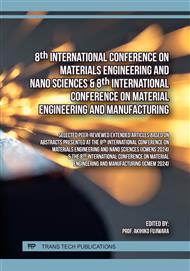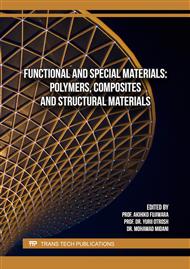p.3
p.11
p.17
p.23
p.31
p.37
p.43
p.49
Optimize the Operational Efficiency and Performance of Resistive Photomemory by Adjusting the Molecular Chain Ratio in the Polyimide Film
Abstract:
The current research focus in our group is on utilizing the polymer material polyimide (PI) as the resistance switching layer for resistive memory. In recent years, PI resistive photomemory (RePM) [1] has been developed, capitalizing on the photosensitive properties of PI films in the ultraviolet light band. PI initially possesses two chemical structures, Aromatic and Quinoid, the PI film undergoes transformation when exposed to ultraviolet light. By employing various processing methods to control the ratio of Quinoid and Aromatic molecular chains in the PI film, and through FTIR measurements of chemical structure changes before and after illumination, we gain insights into the variations in the molecular chain ratio due to different experimental parameters. FTIR analysis reveals that changes in spin coating speed influence the molecular ratio within the film, attributed to differences in molecular chain shapes and lengths. Experimental results demonstrate that optimizing the spin coating process enhances the operational efficiency of RePM, significantly extending data retention time.
Info:
Periodical:
Pages:
3-9
Citation:
Online since:
September 2024
Authors:
Price:
Сopyright:
© 2024 Trans Tech Publications Ltd. All Rights Reserved
Share:
Citation:



